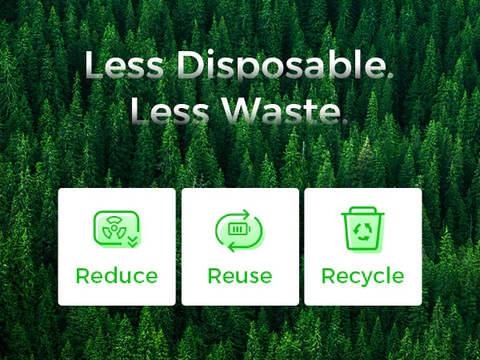Disposable hand warmers are a popular item used to keep hands warm during cold weather conditions. However, while they may be convenient, the environmental impact of disposable hand warmers is cause for concern. In this essay, we will explore the environmental impact of disposable hand warmers and consider alternatives to their use.
How Disposable Hand Warmers Work
Disposable hand warmers work through a process called oxidation. They typically contain iron powder, activated carbon, salt, and other ingredients. When exposed to air, these ingredients react and produce heat. The oxidation process is exothermic, meaning it releases heat as a byproduct.
Inside the disposable hand warmer, the iron powder is mixed with air and salt. The salt acts as a catalyst, speeding up the reaction between the iron powder and oxygen in the air. The process of oxidation generates heat for several hours, usually between 4 and 10 hours depending on the hand warmer's size and manufacturer. Once the reaction is complete, the hand warmer will no longer generate heat and can be disposed of.
Overall, disposable hand warmers work by creating a chemical reaction that generates heat. While they may be useful in cold weather conditions, the environmental impact of disposable hand warmers is a cause for concern, some eco-friendly alternatives should be considered.
The Environmental Impact of Disposable Hand Warmers
Disposable hand warmers contain various chemicals such as iron powder, activated carbon, and salt that react with air to produce heat. Once the reaction is complete, the hand warmer is disposed of and cannot be reused. This process creates a significant amount of waste that ends up in landfills, contributing to pollution and environmental harm.
Create Unnecessary Waste
One of the main environmental impact of disposable hand warmers is the waste they create. When disposed of, the plastic wrapping and other materials can take hundreds of years to decompose, leading to increased pollution and harm to the environment. Additionally, the materials used in disposable hand warmers are often not biodegradable and can release harmful chemicals into the soil and water when they eventually break down.

Consumption in Manufacturing Process
Another potential environmental impact of disposable hand warmers is their manufacturing process. The production of hand warmers typically requires energy-intensive processes and the use of non-renewable resources. Additionally, the transportation of these hand warmers from the manufacturing facility to retail stores and ultimately to the end consumer also requires significant energy consumption and contributes to carbon emissions.
Harmful to Both Human Health and Environment
Moreover, the chemicals used in disposable hand warmers can be harmful to both human health and the environment. For example, some hand warmers contain activated carbon, which can release volatile organic compounds (VOCs) when heated. VOCs can cause respiratory problems and are also a significant contributor to air pollution.
Your Alternatives to Disposable Hand Warmers
While disposable hand warmers may be convenient, they have a significant environmental impact. Fortunately, there are alternatives to disposable hand warmers that are both eco-friendly and cost-effective. One alternative is rechargeable hand warmers, which can be used multiple times and are typically made from safe and durable materials, which are a more sustainable and cost-effective option compared to disposable hand warmers nowadays.

They provide several benefits, including reducing environmental harm and being more economical. One of the popular brands like Ocoopa, their rechargeable hand warmers come in a variety of shapes and sizes, making them versatile and adaptable to different situations. They can be used to keep your hand warm, as well as a source of warmth during outdoor activities such as camping, hiking, and skiing.
Unlike disposable hand warmers, rechargeable hand warmers can be used multiple times. Ocoopa Union 5s, for instance, it comes with detachable and rechargeable battery core, enables you to refill your hand warmer for another 15 hours of use anywhere and anytime outdoors. So you do not need to be purchase another after one use. And they also have 4 multiple heating levels that provide you with a better warming experience,making them a more cost-effective and eco-friendly in the long run.
In conclusion, it is estimated that approximately 2 billion disposable hand warmers are used each year, which contributes to plastic waste and pollution. Using rechargeable hand warmers can significantly reduce environmental harm caused by disposable hand warmers. Additionally, they are versatile and can be used for various purposes, making them a useful addition to any outdoor activity. By making conscious choices, we can help reduce the environmental impact of disposable hand warmers, reduce our carbon footprint and protect our planet while keeping our hands warm.
